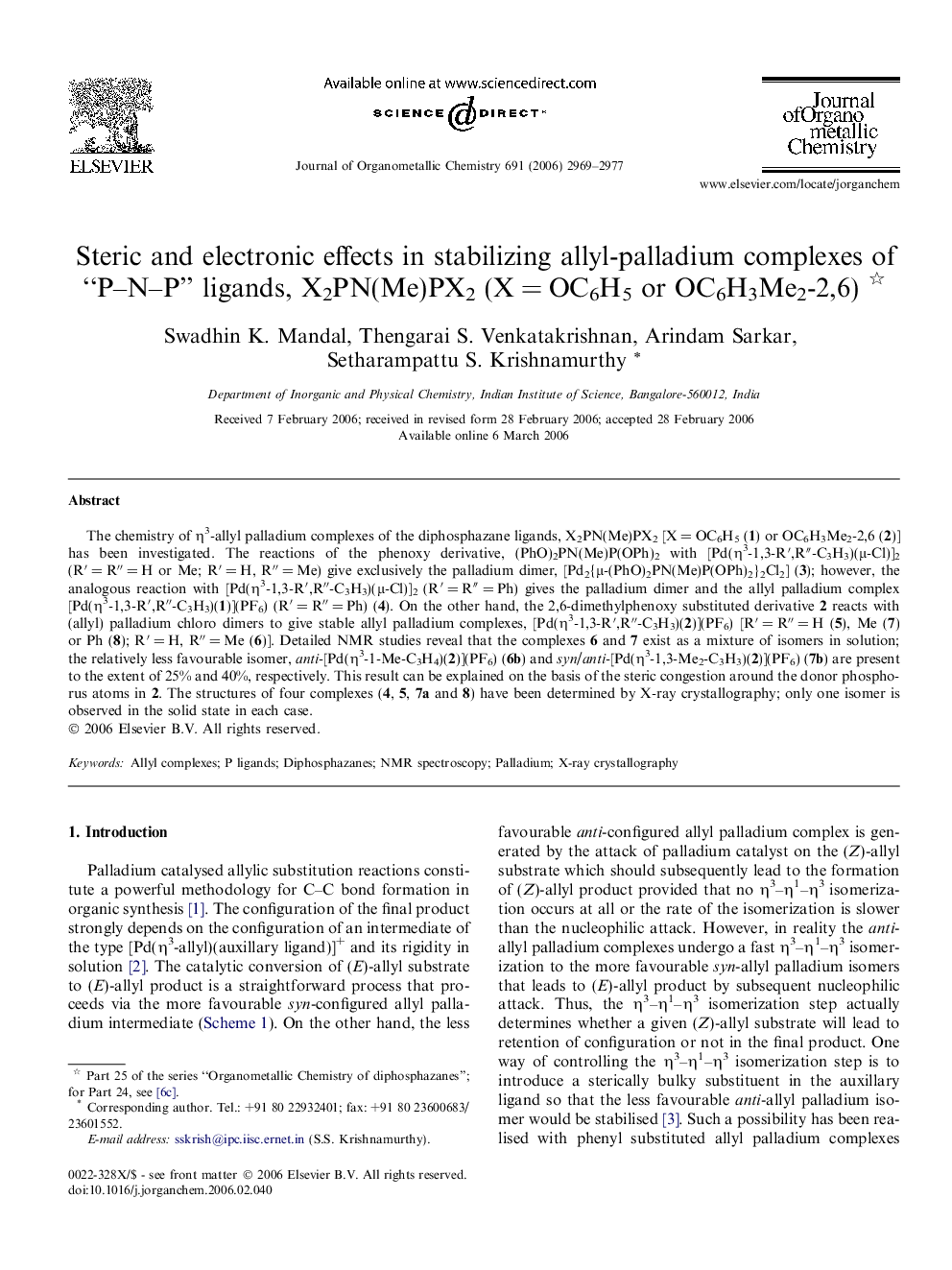| Article ID | Journal | Published Year | Pages | File Type |
|---|---|---|---|---|
| 1327529 | Journal of Organometallic Chemistry | 2006 | 9 Pages |
The chemistry of η3-allyl palladium complexes of the diphosphazane ligands, X2PN(Me)PX2 [X = OC6H5 (1) or OC6H3Me2-2,6 (2)] has been investigated.The reactions of the phenoxy derivative, (PhO)2PN(Me)P(OPh)2 with [Pd(η3-1,3-R′,R″-C3H3)(μ-Cl)]2 (R′ = R″ = H or Me; R′ = H, R″ = Me) give exclusively the palladium dimer, [Pd2{μ-(PhO)2PN(Me)P(OPh)2}2Cl2] (3); however, the analogous reaction with [Pd(η3-1,3-R′,R″-C3H3)(μ-Cl)]2 (R′ = R″ = Ph) gives the palladium dimer and the allyl palladium complex [Pd(η3-1,3-R′,R″-C3H3)(1)](PF6) (R′ = R″ = Ph) (4). On the other hand, the 2,6-dimethylphenoxy substituted derivative 2 reacts with (allyl) palladium chloro dimers to give stable allyl palladium complexes, [Pd(η3-1,3-R′,R″-C3H3)(2)](PF6) [R′ = R″ = H (5), Me (7) or Ph (8); R′ = H, R″ = Me (6)].Detailed NMR studies reveal that the complexes 6 and 7 exist as a mixture of isomers in solution; the relatively less favourable isomer, anti-[Pd(η3-1-Me-C3H4)(2)](PF6) (6b) and syn/anti-[Pd(η3-1,3-Me2-C3H3)(2)](PF6) (7b) are present to the extent of 25% and 40%, respectively. This result can be explained on the basis of the steric congestion around the donor phosphorus atoms in 2. The structures of four complexes (4, 5, 7a and 8) have been determined by X-ray crystallography; only one isomer is observed in the solid state in each case.
Graphical abstractThe difference in the reactivity of the two ligands, X2PN(Me)PX2 [X = OC6H5 (1) or OC6H3Me2-2,6 (2)] towards (allyl)palladium dimers [Pd(η3-1,3-R′-R″-C3H3)(μ-Cl)]2 (R′ = R″ = H, Me or Ph; R′ = H, R″ = Me) is brought out.Ligand 1 gives the dipalladium(I) complex in all reactions; only with [Pd(η3-1,3-R′-R″-C3H3)(μ-Cl)]2 (R′ = R″ = Ph), a cationic allyl palladium complex is also formed.By contrast, ligand 2 gives only cationic allyl palladium complexes; for two of these complexes, isomers with less favourable allylic arrangements (anti- or syn/anti) are present in solution to a significant extent.Figure optionsDownload full-size imageDownload as PowerPoint slide
